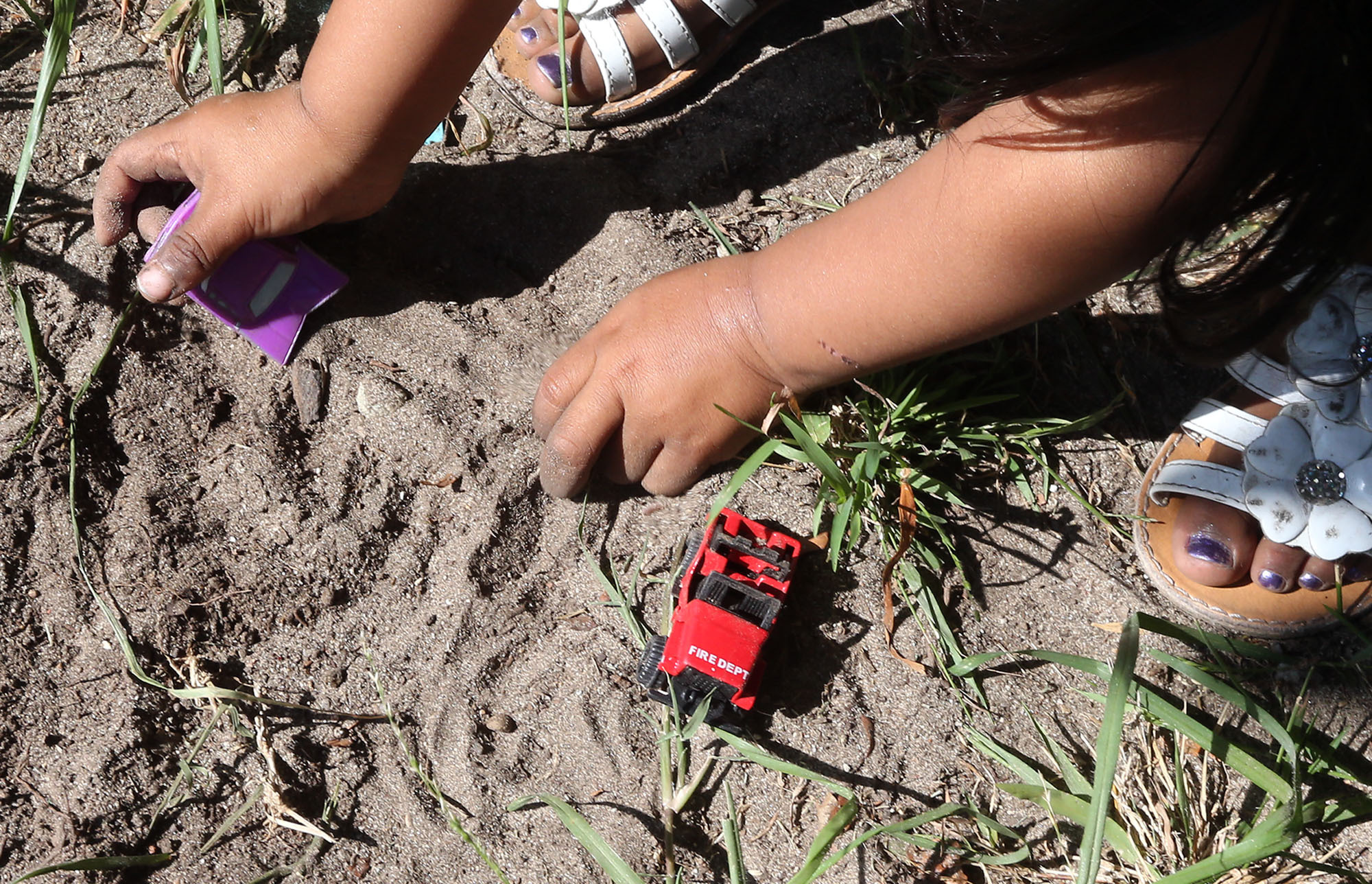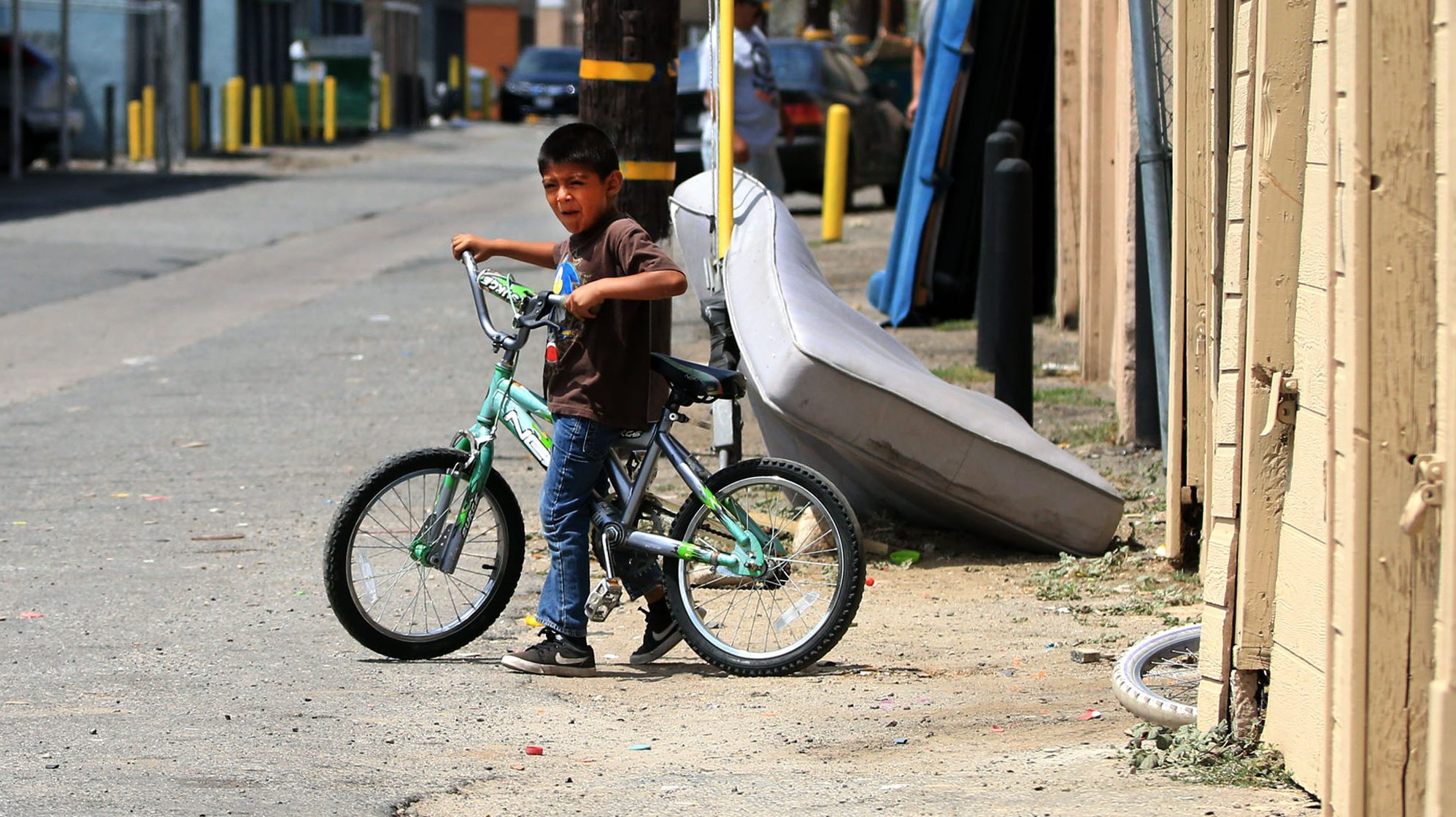The city council of Santa Ana, the predominantly Latino county seat of Orange County, California, approved a cutting-edge resolution this month that not only declares a climate emergency, but simultaneously pledges that the city will limit or prevent exposure to lead and other environmental toxins among its population of more than 300,000 people.
The resolution, approved by a 6-1 vote on Tuesday, September 7, ensures that initiatives implemented to slow the climate crisis are paired with policies to mitigate economic inequalities, environmental injustices, and public health risks tied to pollution in vulnerable communities.
By passing the measure, the city council acknowledges the impact of climate change in driving up temperatures, increasing the frequency of extreme heat events, and exacerbating drought. As a remedy, the city is pledging to implement policies that promote decarbonization and electrification of buildings and transportation, mitigate greenhouse gas emissions across all industries and communities, and accelerate a clean-energy transition. In the resolution, Santa Ana declares its intent to transition to 100 percent clean, renewable, zero-carbon emission energy sources for its electric power supply before 2045.
The council then goes beyond simply climate, connecting warming to winds that can reintroduce soil lead into the atmosphere as soil dust. It commits to investigate and implement policies to limit or prevent exposure to lead and other environmental toxins from new and existing sources. Additionally, the city pledges to consider further measures to remediate contaminants putting Santa Ana residents in harm’s way.
The resolution drew praise from across the country, including from Ruth Ann Norton, president and chief executive officer of the nonprofit Green & Healthy Homes Initiative in Baltimore, Maryland, who has spearheaded efforts to aggressively reduce childhood lead poisoning. She views Santa Ana’s resolution as a potential model that lays the groundwork for other cities to tackle issues that she sees as inseparable.
“What we’re really seeing here is the understanding and the crescendo of environmental justice and climate and legacy pollution all coming together as properly interlinked,” said Norton, who specifically applauded the resolution’s centering of healthy housing and public health as an integral part of the city’s efforts to address the climate crisis.
Santa Ana City Councilmember Jessie Lopez, who introduced the resolution earlier this year, told Grist that the current council is taking a step previous ones had failed to take: acknowledging the lead contamination that exists throughout the city. “The fact is that we have known about lead in the city for a really long time, and what has been done about that? Absolutely, to the best of my knowledge, nothing,” Lopez said at last week’s meeting. “So yes, we need something like this to keep ourselves accountable, and not just to do that, but to acknowledge the issues in our community.”

Lopez, who was elected to the city council last fall, was born and raised in one of Santa Ana’s densely populated central city neighborhoods. She said she first learned of the city’s soil-lead contamination issues through the public advocacy organization Orange County Environmental Justice, or OCEJ, which is part of a coalition of residents, advocates, and academic scholars that has for more than three years raised awareness about the dangers of lead exposure in Santa Ana. That coalition has conducted soil lead testing throughout the city, and pressed city officials and the Orange County Health Care Agency to more aggressively address the problem.
In 2020, it released a study, led by a team of researchers at the University of California, Irvine, that analyzed more than 1,500 soil samples collected throughout the city. The survey found a higher incidence of lead contamination in the city’s poorest neighborhoods — areas with the highest percentages of young children, residents without health insurance, and renters.
The research followed on findings from my own 2017 investigation that found soil lead levels surpassing what the California Office of Environmental Health Hazard Assessment considers dangerous for children in nearly a quarter of more than 1,000 soil tests conducted in the city’s predominantly immigrant and low-income neighborhoods. That same investigation showed that the ratio of Santa Ana children who had dangerous levels of lead in their blood exceeded the state average by 64 percent, and that Latino children represented a majority of children who are lead poisoned statewide, based on public health data.
What concerned Lopez, and ultimately led to her proposing the resolution the city council passed last week, was a lack of action on the part of the city, which is nearly 78-percent Latino and also skews young, with about 27 percent of the population under the age of 18. (By comparison, statewide in California 22.5 percent of the population is under 18.) After all, in 2012, the U.S. Centers for Disease Control and Prevention had declared that no level of lead is safe for children.
The resolution’s passage was a victory for OCEJ. Patricia J. Flores Yrarrázaval, the organization’s project director, was especially pleased that the measure will tackle lead exposure in tandem with renter protections to prevent the displacement of residents during and after home remediation clean-up efforts. This is one of the key policy recommendations the organization has pressed for during discussions with the city about addressing lead contamination in the current update to Santa Ana’s general plan. “One of our biggest concerns is trying to make these policies comprehensive and intersectional,” said Flores Yrarrázaval. “We need things like rental protection in order to make sure that current residents — the residents who really built this city — can benefit from a healthier environment.”
The strategy of addressing climate change while also tackling existing environmental burdens in low-income communities is an approach that advocates like Ruth Norton of the Green & Healthy Homes Initiative have pushed for with federal agencies, such as the U.S. Department of Energy. The idea is that before working on climate-forward improvements such as energy efficiency, weatherization, and electrification in low income and older communities, those places must first achieve a baseline of health and safety. That means addressing lead contamination and the conditions and structural factors that trigger asthma, for example.
“Ground zero really is: Address these contamination issues so that we can advance the other work and investment that needs to happen,” Norton said. “These things, some of them may be seen as lofty ideas or goals; they are actually extraordinarily practical when you get to the implementation side of what is needed and what we have longed incrementalized and not invested in.”
Specifically addressing lead within the larger climate emergency resolution made sense to Lopez, who considers exposure to the toxic metal to be part of the broader environmental injustices occurring in Santa Ana, in addition to disparities in who within the city limits suffers from extreme heat and air pollution. Putting lead at the center of a climate plan that will create an overall healthier environment for Santa Ana residents means that funding for this issue will be prioritized, she said, noting that the city has already applied for federal Housing and Urban Development funds to address hazards from lead-based paint.
“It’s not something that we’re going to have a solution for overnight,” said Lopez. “But I know that this is a really good step.”


